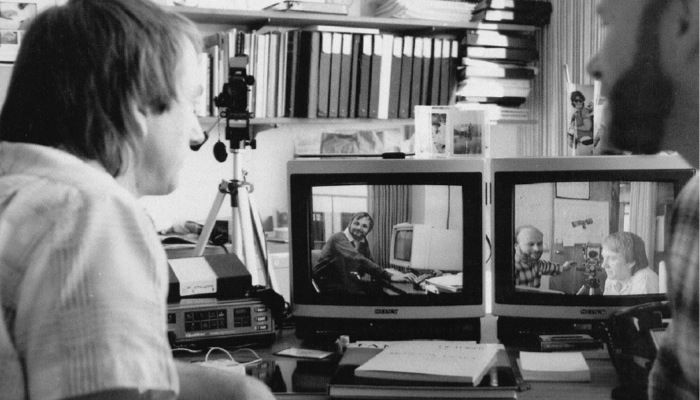
In the mid 1980’s Bob Stults and Steve Harrison created the first media space at Xerox Palo Alto Research Center (“PARC”). From their initial office-to-office always-on real time audio and video connection grew a switched network of continuous connections for a small laboratory split between Palo Alto, California and Portland, Oregon. Offices and public spaces had cameras, microphones, and video monitors and computers that were always on. The images on the screens and the sound coming out of the speakers created shared offices, placed offices on hallways 500 miles away, and “virtually” doubled the size of the common area for both the Portland and Palo Alto groups. Colleagues shared informal interactions and formal lab meetings, quick conversations and in-depth discussions; cross-site projects and cross-site reporting relationships. Despite the difficulties of technology-mediated communication, the lab researchers knew each other and regularly interacted. [Stults 1986; Bly et. al. 1993; Harrison et. al. 1997]
Other research labs followed with internal-only and multiple site configurations. EuroPARC in Cambridge [Gaver et. al. 1992; Bellotii and Dourish 1997], BellCore [Fish et. al. 1990], US West in Denver [Bulick et. al. 1989], Sun Labs in Palo Alto, [Tang et. al. 1994], and the University of Toronto [Mantei et. al 1991] all began experimenting with forms of real-time audio, video and computer connection that put people into extended working situations with one another. These many lab-based projects were each quite different from one another in both (often important) subtle ways and (sometimes unimportant) obvious ways. These media spaces supported a sense of community, extended one-on-one close collaboration, and teleconferencing. “Media space” brought the topics of awareness, gaze and attention, visual reciprocity, para-social relationships, control, notification, echo-canceling, spatialized real-time audio, collaborative sketching, and, of course, privacy to the CSCW research table. Through these, media spaces engendered CSCW research in desktop video conferencing, shared drawing, (e.g. VideoDraw [Tang and Minneman’s 1990] and TeamWorsktation [Ishii 1990] and Clearboard [Ishii and Kobayashi 1992]), awareness servers (Portholes [Dourish and Bly 1992]), time-shifting technologies (WhereWereWe [Harrison et. al. 1999]), and even some aspects of MUD’s and MOOs (Jupiter [Curtis et. al. 1995]).
Media Spaces